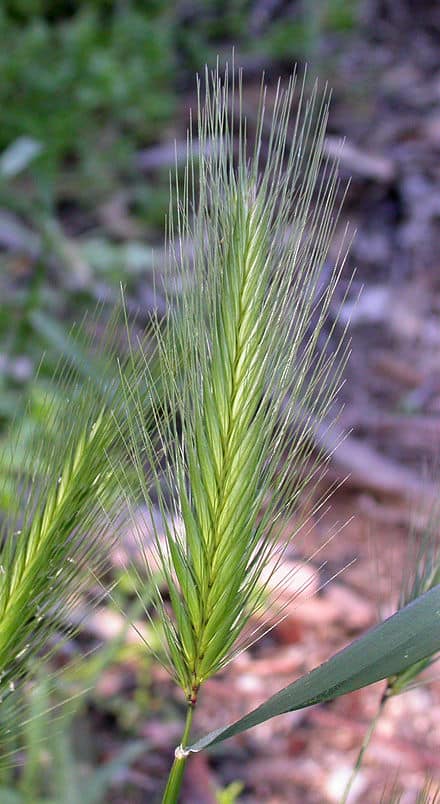Could This Dangerous Plant be Lurking at a Park Near You?
Published August 9, 2017 at 5:52 pm

If you’ve been wandering in one of Mississauga’s major parks lately, you might have come across some barbed-looking grass–especially in grassier areas.
That grass, known as foxtail grass, was recently spotted by a Facebook user in the off-leash portion of Jack Darling Memorial Park. The user posted an article about the grass on the Lakeview and Port Credit Facebook page and warned people with pets–especially dogs that like to wander–to be extra vigilant (and for good reason).
Foxtail grass, which is a native grass that occurs naturally in some outdoor areas, is common (and, according to the City of Mississauga, not routinely removed) but potentially dangerous to pets.

Photo courtesy of Wikipedia
According to this WebMD article, the barbed seed heads of the foxtail plant “can work their way into any part of your dog or cat, from the nose to between the toes and inside the ears, eyes, and mouth. They can even simply dig themselves directly into a patch of skin.”
Although the plant can simply cause minor irritation, it’s also been known to prompt serious medical issues. WebMD says that because the seeds don’t break down once embedded in the body, they can cause major infections–some of which can be fatal if left untreated.
Even worse, the article says the seeds can migrate from inside a dog or cat’s nose to its brain or be inhaled and perforate the animal’s lungs.
Since the seeds can be hard to find in a dog or cat’s fur, you might want to be aware of certain symptoms–especially if your pet is known to walk in grassy areas.
WebMD advises keep a close eye on the following body parts:
- Feet. Foxtails can easily become embedded between toes. Check for foxtails if you notice swelling or limping or if your dog is constantly licking the area.
- Ears. If your dog is shaking his head, tilting it to the side, or scratching incessantly at an ear, this could be the sign of a foxtail — one that may be so deep inside the ear canal you can’t see it. If this symptom persists, see your vet.
- Eyes. Redness, discharge, swelling, squinting, and pawing all may be signs your dog has a foxtail lodged in her eye. If you think this may be the case, seek veterinary care immediately.
- Nose. If you see discharge from the nose, or if your dog is sneezing frequently and intensely, there may be a foxtail lodged in a nasal passage.
- Genitals: If your pet is paying more attention than usual to this area, a vet visit might be in order to rule out foxtail seeds.
Since foxtails are not typically removed from grassy areas, it’s best to try to prevent problems before they occur.
WebMD recommends examining your pet’s coat during foxtail season (typically May through December) and brushing your pet as necessary, looking for pointy foxtail awns. You should also check your dog or cat’s face and ears carefully for foxtails, while also paying attention to their mouth and gums. You might also want to carefully check your dog’s paw pads for foxtails — especially between the toes.
If you see a foxtail, use tweezers to remove it (but only if it’s accessible). If a foxtail is deeply embedded, or if the area around it is red or swollen, call your vet right away.
All that said, the best way to prevent foxtail problems is to keep your dog or cat out of overgrown, grassy areas. If you find foxtail in your yard, remove it promptly.
WebMD also recommends trimming your pet’s hair during foxtail season, as animals with long fur and floppy ears are more prone to foxtail issues.
insauga's Editorial Standards and Policies advertising





